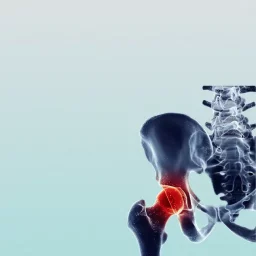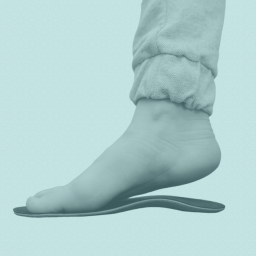Physiotherapy, also known as physical therapy, is a vital healthcare discipline focused on restoring and improving physical function, mobility, and quality of life. Physiotherapists use various modalities to aid in the rehabilitation process, and one such tool that has gained widespread recognition is therapeutic ultrasound. Ultrasound in physiotherapy is not about capturing images of internal organs but rather utilizing sound waves to promote healing, alleviate pain, and expedite recovery. In this blog, we’ll explore the use of therapeutic ultrasound in physiotherapy and how it benefits patients in their journey towards better health.
Understanding Therapeutic Ultrasound
Therapeutic ultrasound is a non-invasive and painless technique that involves the use of high-frequency sound waves to treat a variety of musculoskeletal conditions. These sound waves are generated by a transducer (a handheld device) and are directed into the patient’s body through a gel or coupling agent that facilitates the transmission of the waves. The ultrasound waves travel deep into the tissue, causing subtle vibrations and heat, which induce therapeutic effects.
The Benefits of Therapeutic Ultrasound
Pain Management:
-
- Ultrasound therapy is effective in pain management, particularly for chronic conditions such as osteoarthritis and tendinitis. The heat generated by the ultrasound waves helps to increase blood flow, relax muscles, and reduce pain. The heat also improves the flexibility of connective tissues, making it easier for the physiotherapist to work on mobilizing joints and relieving discomfort.
Tissue Healing:
-
- The sound waves delivered via ultrasound promote tissue healing. Therapeutic ultrasound accelerates the body’s natural healing processes by stimulating blood circulation and cell metabolism. This can be especially helpful for soft tissue injuries like sprains and strains, as well as post-surgery recovery.
Reducing Inflammation:
-
- Inflammation is a common issue in many musculoskeletal conditions. Ultrasound can help reduce inflammation by enhancing the circulation of nutrient-rich blood to the affected area. This, in turn, aids in the removal of waste products and toxins, thus reducing swelling and discomfort.
Improved Range of Motion:
-
- Patients with limited joint mobility can benefit from ultrasound therapy. Targeting the affected area with sound waves can help relax and stretch the surrounding muscles, making it easier for physiotherapists to work on restoring the patient’s range of motion.
Targeted Treatment:
-
- Therapeutic ultrasound offers precise and localized treatment. The therapist can adjust the intensity and depth of the ultrasound waves to focus on specific areas that require attention. This customization ensures the therapy is tailored to the patient’s unique needs.
Non-Invasive and Safe:
- Therapeutic ultrasound is non-invasive and does not involve the use of drugs or surgery, making it a safe option for patients. The procedure is painless, and patients typically experience no side effects or adverse reactions.
Precautions
While ultrasound therapy offers numerous benefits, there are certain considerations and precautions to keep in mind:
Patient Suitability:
-
- Not all conditions or individuals are suitable candidates for therapeutic ultrasound. A qualified physiotherapist should determine the treatment plan.
Duration and Frequency:
-
- The duration and frequency of ultrasound sessions may vary based on the patient’s condition and response to treatment. Typically, sessions last around 5-10 minutes.
Gel Application:
-
- Proper application of the coupling gel is essential to ensure the efficient transmission of ultrasound waves into the body.
Contraindications:
- There are contraindications to therapeutic ultrasound, such as over cancerous tumours, the abdomen during pregnancy, or areas with impaired sensation. These must be carefully considered by the treating physiotherapist.
Therapeutic ultrasound has established itself as a valuable tool in physiotherapy, contributing to the overall well-being and recovery of countless patients. By harnessing the power of high-frequency sound waves, physiotherapists can alleviate pain, promote tissue healing, reduce inflammation, and enhance mobility. While ultrasound is generally safe and well-tolerated, healthcare professionals must determine its suitability for individual patients and administer the treatment effectively.
As physiotherapy continues to evolve, therapeutic ultrasound remains a cornerstone in the holistic approach to rehabilitation, helping individuals regain their physical abilities and improve their quality of life. To learn more about therapeutic ultrasound and how it could benefit your recovery please speak to one of our physiotherapists. To book an appointment, please contact our Glebe Clinic at 613-237-9000, or our Byward Clinic at 613-860-8600, or visit us online.

⭐️⭐️⭐️⭐️⭐️ on GOOGLE
I’ve had both physiotherapy and chiropractic care here.
SA is an incredible physiotherapist. I sprained my ankle pretty bad, and decided to get physio. SA worked with me to initially get my flexibility back and then worked on strengthening exercises. I was back to playing sports in no time. She is very knowledgeable and takes her time to ensure you understand the exercises. I highly recommend her for physiotherapy.
Dr. H is exceptionally proficient in chiropractic care. They are entirely focused on the wellbeing and improvement of each patient. I look forward to every appointment. If you are looking for someone that understands the discomfort or pain you may be feeling and has the knowledge and experience to assist you, look no further.
Do yourself a favour and visit Curavita. Dr. H, SA and staff are truly wonderful. Thank you for all your hard work and effort!
-TM

⭐️⭐️⭐️⭐️⭐️ on GOOGLE
The physiotherapist is a great physiotherapist! I have been working with her with my left arm pain and in just a short period of time the pain was gone. She is knowledgeable, kind, caring and professional while still keeping a friendly and comfortable environment. The location is convenient and the appointment times fit my schedule. Excellent experience and would have no hesitation in recommending SA to my family and friends if they ever require physiotherapy. Thank you again for your help, advice and support.
-BB

⭐️⭐️⭐️⭐️⭐️ on GOOGLE
I’ve been a casual massage therapy client at CURAVITA for a few years but recently visited the Glebe clinic for help with a chronic plantar fasciitis problem. I received treatment from the physiotherapist and the chiropractor, and have seen so much improvement and pain relief through these treatments. I am now able to walk pain-free, am beginning to scale up my workouts at the gym so that I can get back to the volume of exercise I am used to and, in general, because of the chiropractic care have noticed huge improvements in how my body feels overall.
-CW

⭐️⭐️⭐️⭐️⭐️ on GOOGLE
I just recently completed successful physio therapy with Curavita and physiotherapist. What a wonderful team of friendly and professional people. Kudos for the knowledge and skill as a physiotherapist, and his patience with me. Thanks for the cheerful ladies at the front desk who always greeted me with a smile and friendly familiarity that made me feel at home despite the pain that brought me there. I’m now pain free after a few weeks of visiting Curavita, and very thankful for their care.
-PL

⭐️⭐️⭐️⭐️⭐️ on GOOGLE
The physiotherapist is attentive and very supportive in her assessment and the physiotherapy care she provides. Her qualifications and experience come through in her interaction and you cant help but feel that you will feel better after each treatment.
-AD

⭐️⭐️⭐️⭐️⭐️ on GOOGLE
I have been going to Curavita in the Glebe for the past 8 months for physio. The reception have always been very friendly and more than helpful to make sure I was comfortable while waiting for my appointment. The physiotherapist was great, patient and pushed me just enough to get my leg back to its old self. Extremely professional and courteous! 10/10 would recommend.
-VL

⭐️⭐️⭐️⭐️⭐️ on GOOGLE
A huge thank you to PT! The dry needling sessions on my shoulder and back have been very helpful! I especially appreciate how he confers with my chiropractor, Dr. B, so that they can coordinate their treatment. I’ve seen a lot of improvement and have trusted the physiotherapist since the first session (which is definitely necessary when it comes to needling)! Thank you!
-RE

⭐️⭐️⭐️⭐️⭐️ on GOOGLE
I have had nothing but good experiences at Curavita. The team is professional, attentive, and caring, starting with the receptionists, all well trained. The physiotherapist is a gem. Being used to US physical therapy, I was pleasantly surprised with how my sessions went: instead of focusing on the exercises that she had given me, this was no more than a couple of questions: have you done them? Where was the pain? Where did you have trouble? She then adjusted my “homework” and proceeded with massage, ultrasounds or whatever hands on treatment I needed to release the pain and get me ready for my week. The facilities are clean and pleasant.
-CD

⭐️⭐️⭐️⭐️⭐️ on GOOGLE
I went for the first time for physio to help heal a mild fracture, and I’m glad I chose Curavita. The physiotherapist successfully helped me improve the range of motion of my arm and reduce the pain. She treated me, and I did all the exercises as prescribed, and I quickly regained normal usage of my arm. She is also very nice and friendly. The front desk is also very welcoming and professional. They also offer other services, like chiro and massage therapy, which I will probably try. Plus it is steps away from where I live in the Byward market.
Thank you!
-SHA

⭐️⭐️⭐️⭐️⭐️ on GOOGLE
My toe pain was much reduced in quite a short period of time thanks to the physiotherapist, a superb physical therapist. She clarified what the issue was, let me know how the procedure would operate, and made sure I understood the exercises I needed to perform at home. She listens well and communicates clearly. I’ll keep using her services and would definitely suggest her!
-JC

⭐️⭐️⭐️⭐️⭐️ on GOOGLE
The physiotherapist worked with Krista and me separately on a few minor ailments (neck, quads and tight arm tendons) She is beyond great and has helped both of us to recover quickly. She is great at her bedside manner as well. 🙂
-JG

⭐️⭐️⭐️⭐️⭐️ on GOOGLE
I consulted the physiotherapist for tendonitis in both wrists. After a month, I saw a clear improvement. The physiotherapist listens and is very professional.
Moreover, the clinic easily accommodâtes the patients. I recommend
-LA

⭐️⭐️⭐️⭐️⭐️ on GOOGLE
The physiotherapist is an outstanding physiotherapist who reduced the pain in my hip and knee in a very short time. She explained what my problem was, informed me of how the process would work and ensured I knew the exercises I was to do at home. She communicates well and is a very good listener. I will continue to avail myself of her services and highly recommend her!
-JS

⭐️⭐️⭐️⭐️⭐️ on GOOGLE
Really good service!
Came in with knee pain, my physio was very knowledgeable. Treatment was great. Home exercises were easy to do and effective.
-CP

⭐️⭐️⭐️⭐️⭐️ on GOOGLE
I found Curavita Byward after searching for physiotherapy providers in lowertown, and im so glad i did! I was also very fortunate to be assigned with my physiotherapist and the progress has been visible very fast and she’s very encouraging and knowledgeable and kind. I also started seeing the chiropractor for chiro after a recommendation of the physiotherapist and overall im very satisfied with the treatement plan, the adjustments show effect almost immediately and im happy with the approach in general. 5/5
-DL

⭐️⭐️⭐️⭐️⭐️ on GOOGLE
I went to Curavita for knee issues, and was attended to by the physiotherapist. She is a miracle maker. She was very clear and articulate about how the treatment plan will proceed, and how I am also supposed to contribute to the treatment by doing my part of exercises. She planned 4 sessions in addition to the assessment. By the 4th session, also with keeping up with my exercises, I was good to go!
The place overall is good. They are flexible, accommodating and have reasonable prices.
-AK

⭐️⭐️⭐️⭐️⭐️ on GOOGLE
I’m satisfied with this clinic. It was my first time going to physiotherapy in general and after few sessions I can already see a good progress from treatments with Sakshi Arora. She and everyone in the clinic are very professional, friendly, and are always trying to help. The booking system is also very easy, appointments are always on time.
If I will need a specialist again in the future I will definitely come back.
-ND

⭐️⭐️⭐️⭐️⭐️ on GOOGLE
I worked with the physiotherapist for Physiotherapy and had a great experience. She was really attentive and very knowledgeable for any questions I had. She really has set me on a good plan to recovery and I appreciate all the work that was done.
The frontend staff was really friendly too, answered all my questions on the first call and made everything quick and efficient. Thanks to everyone there.
-BT

⭐️⭐️⭐️⭐️⭐️ on GOOGLE
I have been working with the physiotherapist for my back and neck pain for the last few months. She is very knowledgeable and experienced and cares about her patients.
-ME

⭐️⭐️⭐️⭐️⭐️ on GOOGLE
My experience at the CURAVITA Glebe location has been nothing short of amazing.
I recently started seeing their physiotherapist to improve my strength and mobility as I work towards a full recovery. The physiotherapist has been incredibly helpful, and I have improved very quickly since I started seeing him. I would recommend him in a heartbeat to anyone that needs a physiotherapist.
-MH

⭐️⭐️⭐️⭐️⭐️ on GOOGLE
Got my physio treatment from the physiotherapist. She is very motivating and I recovered quickly. She also suggested acupuncture for my pain and it helped a lot. She knew what she was doing and the pain subsided in a couple of days.
-NN

⭐️⭐️⭐️⭐️⭐️ on GOOGLE
The physiotherapist helped enormously to heal my arm through her physiotherapy. She’s professional, thorough and attentive care have enabled me to safely return to work.
-KB

⭐️⭐️⭐️⭐️⭐️ on GOOGLE
I saw the physiotherapist for physio a few months after breaking my ankle, and I couldn’t be more pleased with my experience and the results. The physiotherapist kept me on track with my exercises, and I always found our appointments productive. Aside from that, she is very professional, kind, and friendly, and we had some great conversations during the course of treatment. The clinic staff were also very considerate and helpful. My injury was work-related, and Curavita’s staff took care of all the back-and-forth with WSIB, which made my life so much easier. Wonderful experience, would absolutely recommend.
-EV

⭐️⭐️⭐️⭐️⭐️ on GOOGLE
I go to physio and massage here. I have a condition affecting my joints and ligaments, and the physiotherapist went above and beyond to learn about the condition, work within my limitations, and came up with a care and exercise plan to meet my needs. If you have EDS, I recommend you come see them.
-AU

⭐️⭐️⭐️⭐️⭐️ on GOOGLE
I have been working with the physiotherapist at Curavita for the past 1 month for some chronic pain I’ve been having for years. Over the past month, she has helped me understand where this stemmed from, working on reducing the pain, strengthening my muscles and equipping me with tools to manage this by myself in the long term. She has been supportive and an absolute expert in both pain management and physical therapy. 100% recommend her for physiotherapy services!
-J

⭐️⭐️⭐️⭐️⭐️ on GOOGLE
Always awesome when a company lives up to its name! I went into CURAVITA with “pass-out” level pain in my right arm. The physiotherapist is the best. Not only did they diagnose and treat my injury, she explained the “why” and completely changed the ergonomics of my desk space and posture to be now pain free and back in the gym.
Thank you for returning me to good health – I missed it!
-WC

⭐️⭐️⭐️⭐️⭐️ on GOOGLE
I went to see the physiotherapist after a work related injury and my experience was amazing with both the physiotherapist and Curavita. From filling out all the paper work for WSIB to helping me go back to work with no limitations, everyone was so friendly and patient. I recommend this place 100%.
-C

⭐️⭐️⭐️⭐️⭐️ on GOOGLE
I wanted to share a review following a few months of physiotherapy I experienced under the excellent care of the physiotherapist. I have nothing but positive things to say about my experience. She was professional, knowledgeable and regularly checked in on progress, adjusting her treatment as my situation changed. She also took the time to clearly and thoroughly explain various options, providing pros and cons for each, and ensured that my comfort level was the main factor in determining how we proceeded. She also coordinated care with a massage therapy colleague which supplemented the treatment.
Finally, her “bedside manner” was very strong, sharing stories and chatting about all sorts of subjects, complemented by a great sense of humour while I was under her care.
Thanks to the Curavita Byward Team, and particularly the physiotherapist, for a great experience during a time where my physical pain was quite limiting.
-CN















